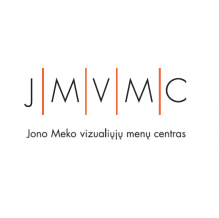We are used to the idea that art criticism and research “examine artists and art practices”. But, can’t it be the reverse? Can art examine art criticism and research? Artist Gintaras Znamierowki throws down this gauntlet and proves that this can be done!
This exhibition is composed as a museum-like exposition-installation that has a cultural anthropological narrative. Lithuanian art research and criticism are both perceived as local “ethnographic” phenomena that are defined as a particular group’s material, physical and spiritual culture. Art research and art criticism are regarded as quickly dying primitive local (sub)cultures that need to be thoroughly researched, classified and at least symbolically preserved for future generations. The material and spiritual facts of this culture have been assembled in the exhibition, grouped together and classified. An in depth look is taken at the unique aspects of the oral and written folk style, worldview, lifestyle and thought processes of the professional groups of art critics and researchers i.e. their professional texts. One can argue that the exhibition can be equated to a comparative synthesis of ethnographic information, except that it is expressed through material things – visuality and artifacts.
Usually, the focus of ethnographic research is landscapes, urban heritage, mansions, sacred architecture, small architecture, ethnic architecture, building decorations, technical values, national folk costumes, folk patterns, wedding gardens, Easter egg patterns, Mardi Gras masks, farming implements, household goods, trade tools, music instruments, holidays, traditions, the cultural heritage of ethnic minorities, memorial burial sites; also, Lithuania is distinct from other nations for its hand forged metal crosses and sacred wood sculptures.
Znamierowski distinguishes art research and art criticism at an ethnographic (and feminist) level and researches the culture that describes it – its spiritual understanding, imaginings, images, mind-set, traditions as well as its material side – household items, art research tools, typical clothing, etc.
Exhibition structure:
The introductory part of the exhibition is entitled Image, View and Overview. This section presents perspectives oriented towards the understanding of a work of art and the work itself as understood by the artist through media, views and research overviews. An overview is something close to a view. The introduction presents the problems associated with the research, its structure and methodology. The key part of the methodology is that it is a certain methodology that is applied as a certain method.
Environment, Contacts and Bribes comprises the second part of the exhibition and the artwork is looked at as one of the components of the ties between art critics and researchers. Regardless of the viewpoint, the artwork will only be one clear part of the chain of bonds that is treated and interpreted as one joint component “on earth as in heaven”. The environment is that space in which those functional, institutional ties bind together and expand, and bribes i.e. that which is pushed in, are those artworks that push themselves in and insert themselves into the process and symbolism and are sometimes presented as intermediaries of these functional ties i.e. bribes. This section analyzes “spiritual depth” as an art research pseudo-tool “on earth as in heaven.”
The third part, Structure, Thinking and Linking pulls our attention away from the object to the subject as a given– towards the art critic or art researcher who interprets the artwork, however, more often towards the art researcher as a professional subject “on earth as in heaven”. An analytical approach is taken towards the professional subject’s structure in depth – way of thinking, lifestyle, taste, the dynamics of mental interconnections. That is the so-called “Conclusions” part in which conclusions are presented as a given.
Curator: Kęstutis Šapoka
Opening: December 27, 2017 at 6PM
Jonas Mekas Visual Arts Center
Malūnų g. 8, Vilnius
Gintaras Znamierowski (b.1970) is the enfant terrible of contemporary Lithuanian art. At the end of the 1980s, together with Donatas Srogis, he was already known as the cynical representative of “Lazdynai (a suburb of Vilnius) Conceptualism”. This “conceptualism” angered the art researchers of the time and for a long while Znamierowski was shunted to the edges of contemporary Lithuanian art.
Not only that, Znamierowski dropped out of the Vilnius Art Academy after only two courses because, in his words, “it was impossible to learn anything decent there.”
Znamierowski has been gaining renown as a proponent of art that has “plastic”, “non-spiritual”, pop art and hyperrealism elements to it that are foreign and unacceptable to traditional Lithuanian art. In his works, Znamierowski makes fun of all the things that are sacred and dear to Lithuanian art and art research. He often does that through parody, but sometimes also borders on offensiveness.
Gintaras Znamierowski and Donatas Srogis had a joint retrospective exhibition entitled The Conceptualism of Lazdynai at the Jonas Mekas Visual Arts Center in 2010. This is the second project for the JMVAC by the artist.













